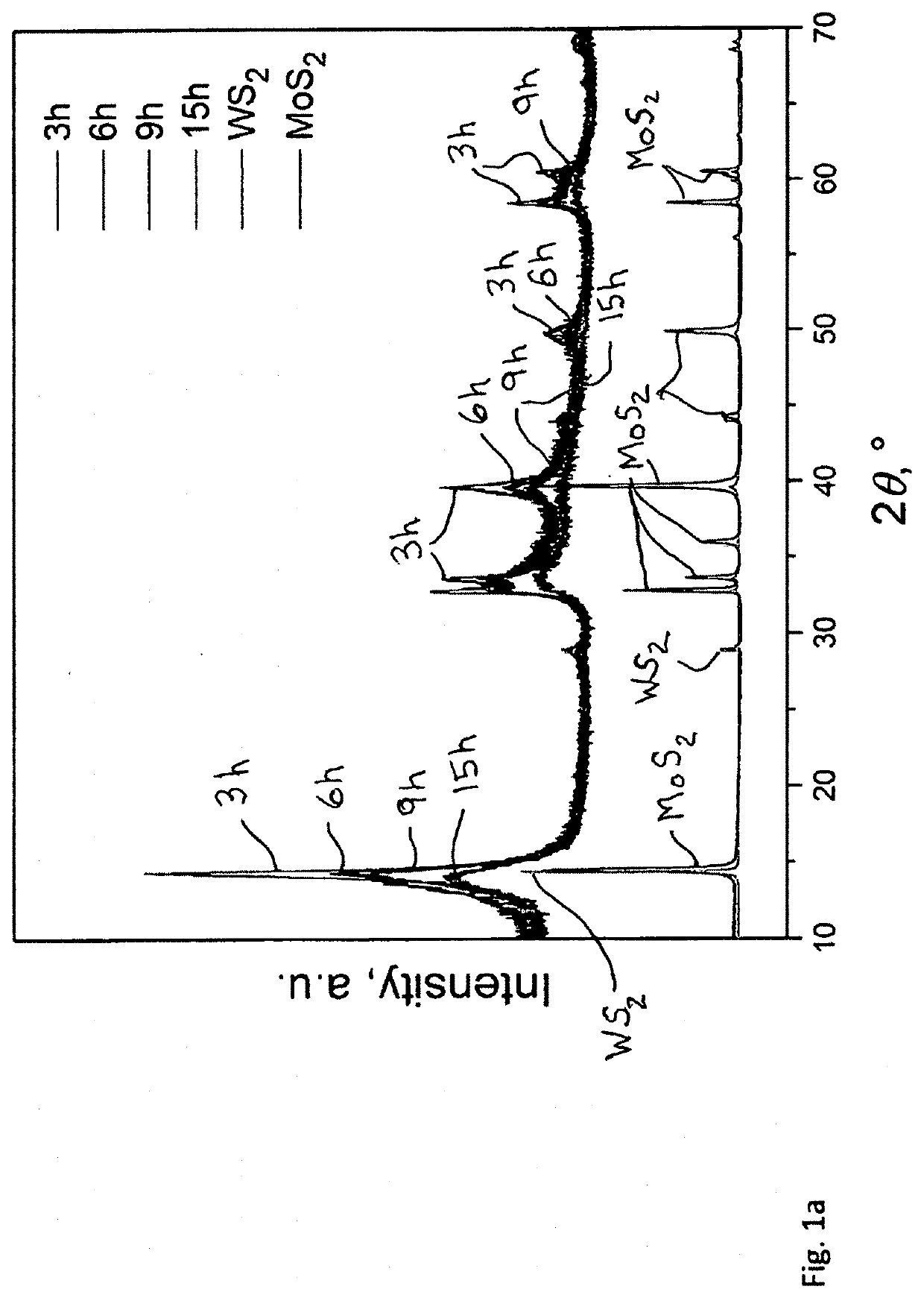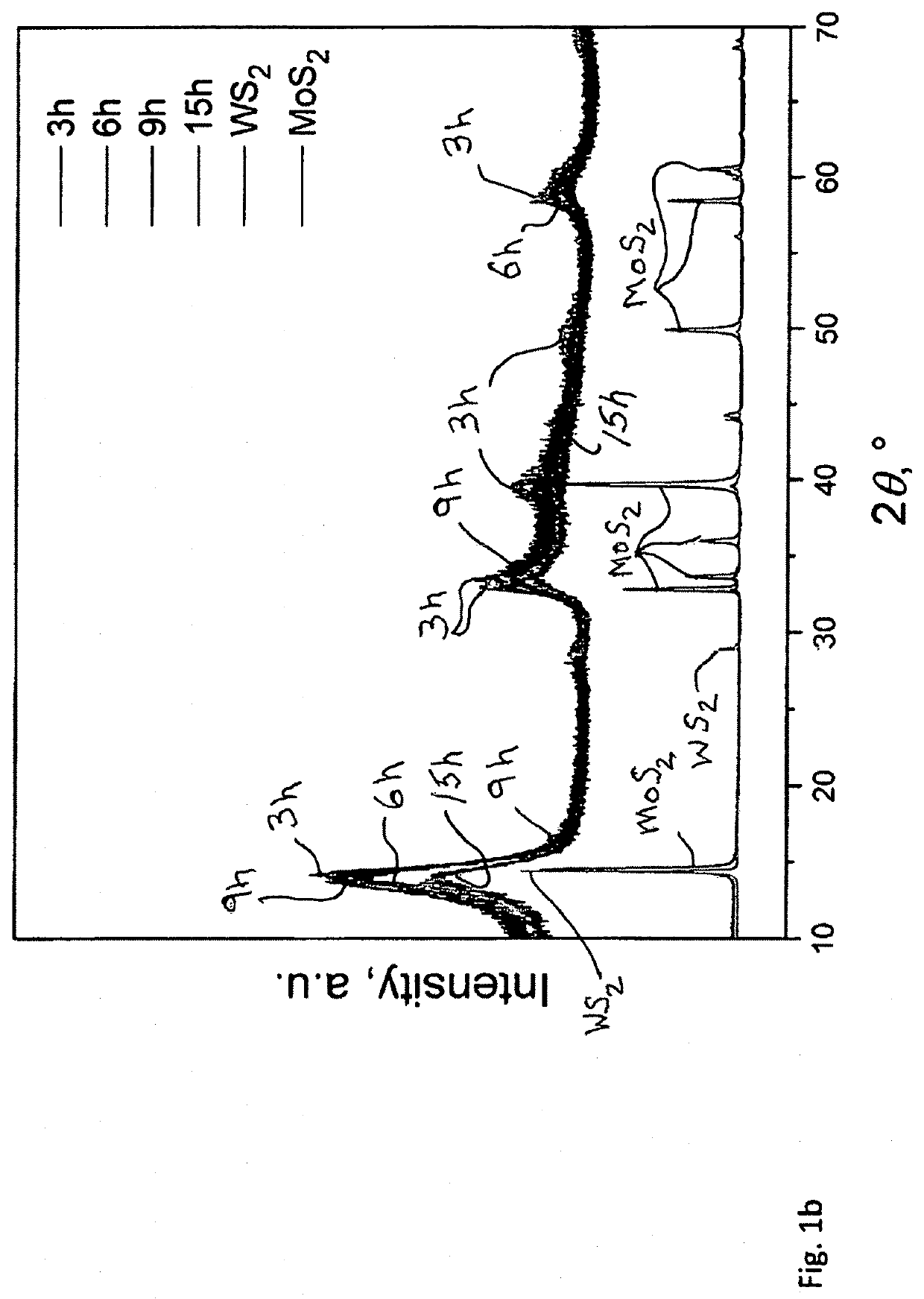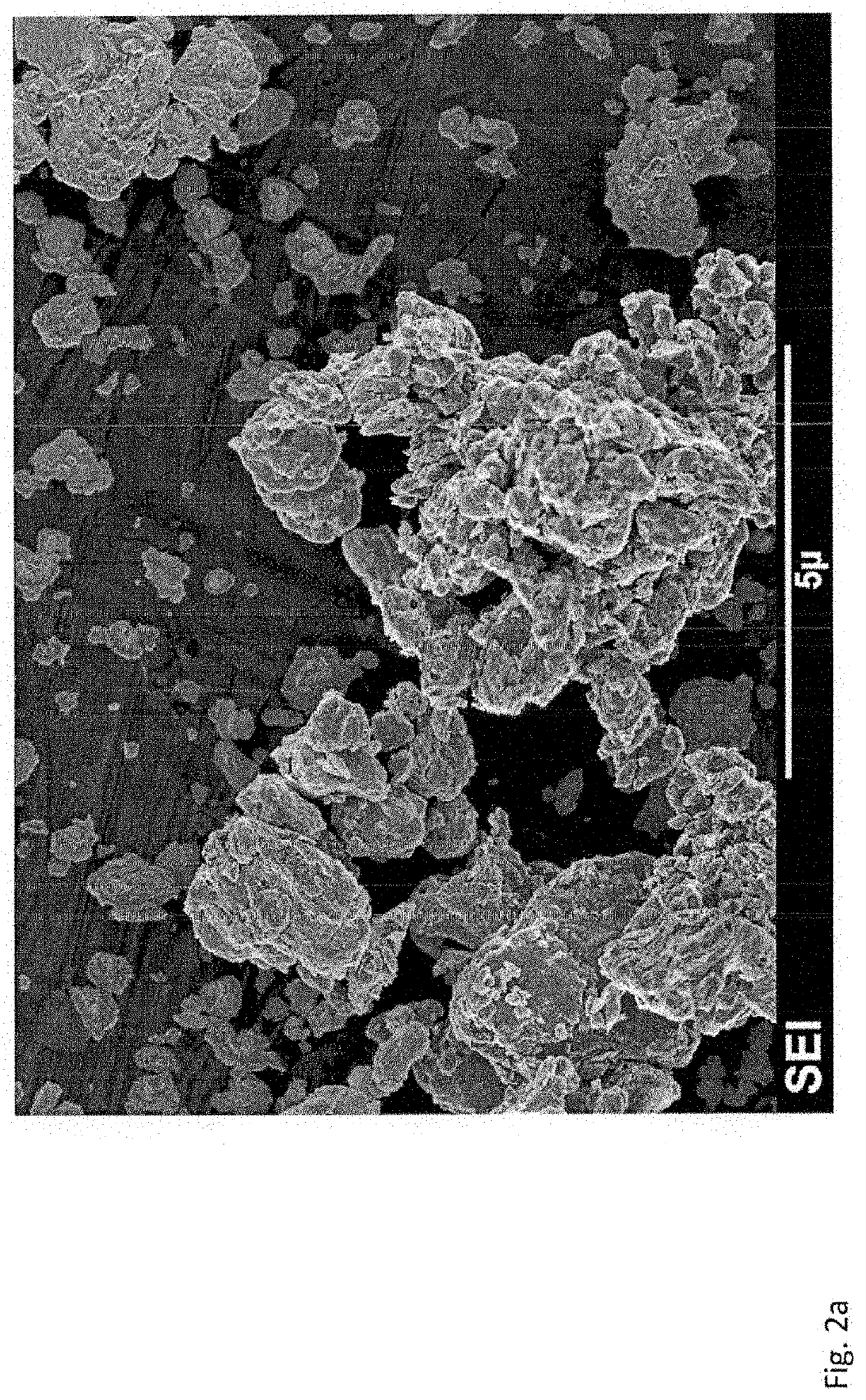Preparation of metal chalcogenides
a technology of metal chalcogenide and chalcogenide, which is applied in the field of preparation of transition metal chalcogenide materials, can solve the problems of complex materials formed using vapor deposition techniques, and achieve the effects of simple, inexpensive and scalable industrial production methods
- Summary
- Abstract
- Description
- Claims
- Application Information
AI Technical Summary
Benefits of technology
Problems solved by technology
Method used
Image
Examples
example 1
MoS2—WS2 System
[0085]In a typical experiment, a total 1 g of the stoichiometric mixture of MoS2 powder and WS2 powder in the 1:1 molar ratio was transferred to a milling container together with eight 12 mm stainless steel balls (about 7 g each) so that ball-to-sample ratio was close to 56:1. After sealing the container under argon, ball milling was carried out for various time intervals at 600 rpm in a horizontal planetary mill Fritsch, Pulverisette 7. To facilitate the uniform milling and prevent caking of the powder during the processing, the milling mode was alternated between forward and reverse (30 min each) with an intermittent pause of 5 min. To investigate the effect of milling regime, the same amount of the sample was also processed in a high-energy mixer mill (SPEX, 8000M mill) in a stainless steel container with two 12.7 mm and four 6.35 mm grinding balls (ball-to-sample ratio=18:1). Ball milled powders were characterized using powder X-ray diffraction (XRD), differential...
example 2
MoSe2—WS2 and MoS2—WSe2 Systems
[0094]Processing of both MoS2—WSe2 and MoSe2—WS2 systems was performed in a planetary mill. For this purpose, 2 g of corresponding equimolar mixture was ball milled at 600 rpm in a planetary mill for 30 hours with eight 12 mm stainless steel balls. The XRD traces of the samples obtained (FIGS. 10a, 10b) showed a significant Bragg peak broadening indicative of disordering in the starting materials. Partially incomplete homogenization of the as-milled samples can be concluded from the enhanced Bragg scattering corresponding to the individual chalcogenides. The 1:1 (molar) MoS2—WSe2 is clearly more homogeneous when compared to the 1:1 (molar) MoSe2—WS2 system.
[0095]After the heat treatment at 1000 degrees C. for 16 hours in argon, both of the investigated materials crystalized into mixed TMDC systems with characteristic Bragg peaks (FIG. 10a for MoS2—WSe2 and FIG. 10b for MoSe2—WS2) that correspond to Mo0.5W0.5S05Se0.5. In the case of MoSe2—WS2 system, bo...
example 3
Three to Six Principal Element (Mixed Metal) TMDC Systems
[0101]In a typical experiment, a 1 or 2 g sample of a physical mixture of two or more different binary TMDCs, taken in an appropriate stoichiometric proportion, was milled in either stainless steel milling container with eight 11.9 mm stainless steel balls, or in a silicon nitride vial with three 12.7 mm silicon nitride grinding balls using a two-station horizontal planetary mill (Fritsch, Pulverisette 7), or a shaker mill (SPEX 8000M) for various periods of time (1-30 hours). The milling containers were loaded and sealed under ultra-high purity argon in a glove box. To facilitate uniform milling and to prevent kinking of the powder during the processing, the milling mode of the planetary mill was alternated between forward and reverse rotations (30 min each) with an intermittent pause of 5 min. Subsequently, as-milled powders were pressed into pellets under argon in a glove box, placed in a quartz tube, which was further seal...
PUM
| Property | Measurement | Unit |
|---|---|---|
| size | aaaaa | aaaaa |
| temperatures | aaaaa | aaaaa |
| temperature | aaaaa | aaaaa |
Abstract
Description
Claims
Application Information
 Login to View More
Login to View More - R&D
- Intellectual Property
- Life Sciences
- Materials
- Tech Scout
- Unparalleled Data Quality
- Higher Quality Content
- 60% Fewer Hallucinations
Browse by: Latest US Patents, China's latest patents, Technical Efficacy Thesaurus, Application Domain, Technology Topic, Popular Technical Reports.
© 2025 PatSnap. All rights reserved.Legal|Privacy policy|Modern Slavery Act Transparency Statement|Sitemap|About US| Contact US: help@patsnap.com



